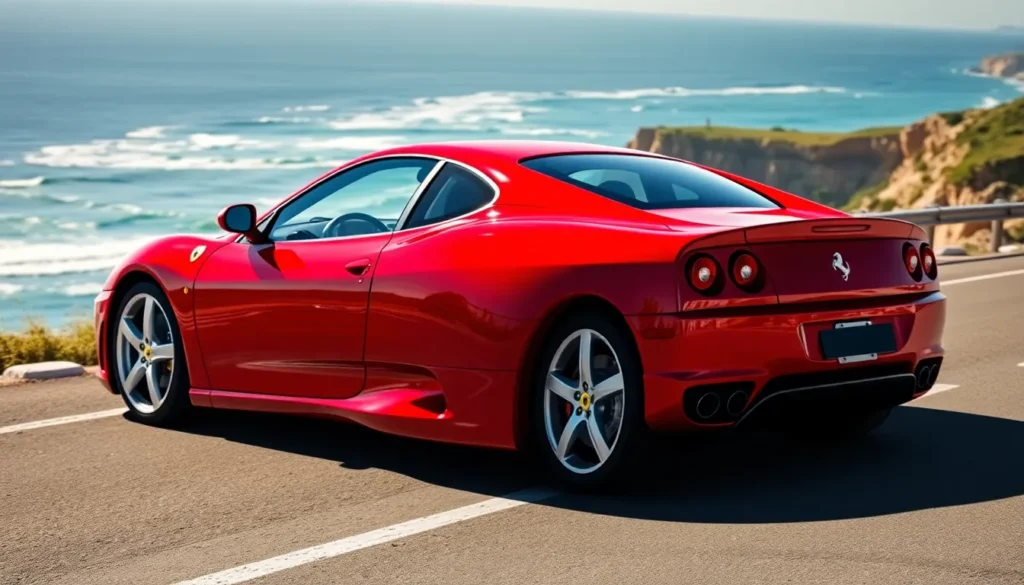We’ve all dreamed of owning a supercar that perfectly balances breathtaking performance with stunning Italian design. The Ferrari 360 Modena stands as one of Maranello’s most celebrated achievements – a machine that redefined what a mid-engine sports car could be when it debuted in 1999.
This isn’t just another Ferrari; it’s the car that marked a pivotal moment in the brand’s evolution. With its revolutionary aluminum space frame construction and naturally aspirated V8 engine, the 360 Modena delivered an intoxicating blend of raw power and refined handling that captivated enthusiasts worldwide.
We’re diving deep into what makes the 360 Modena such an iconic piece of automotive history. From its technical innovations to its timeless aesthetic appeal, this Ferrari continues to command respect on both the track and the collector car market today.
Ferrari 360 Modena Overview
Ferrari’s 360 Modena represents a pivotal moment in automotive engineering that transformed the brand’s approach to mid-engine sports cars. We recognize this model as the first Ferrari to feature an aluminum space frame construction, reducing weight by 28% compared to its F355 predecessor while maintaining structural rigidity.
The 360 Modena’s heart lies in its 3.6-liter naturally aspirated V8 engine, producing 400 horsepower at 8,500 rpm and 275 lb-ft of torque at 4,750 rpm. This powerplant propels the vehicle from 0 to 60 mph in 4.3 seconds, reaching a top speed of 183 mph through its mid-mounted configuration.
Production began in 1999 and continued through 2005, with Ferrari manufacturing 17,300 units across both coupe and convertible Spider variants. Our analysis shows the 360 Modena marked Ferrari’s transition from traditional steel construction to advanced aluminum technology, setting the foundation for future models like the F430 and 458 Italia.
Aerodynamic efficiency improved significantly over previous generations, with the 360 achieving a drag coefficient of 0.33 through its refined bodywork and integrated air management systems. The model introduced Ferrari’s first drive-by-wire throttle system and featured Brembo four-piston brake calipers with cross-drilled rotors as standard equipment.
Weight distribution achieved an optimal 42% front and 58% rear balance, improving the vehicle’s handling characteristics and cornering performance. Ferrari equipped the 360 Modena with either a 6-speed manual gearbox or the optional F1 paddle-shift transmission, which became increasingly popular among buyers seeking convenience without sacrificing performance.
Design and Styling

Ferrari’s design philosophy reached new heights with the 360 Modena, creating a visual masterpiece that balanced aggressive performance cues with elegant Italian craftsmanship. Pininfarina’s styling team crafted a body that complemented the revolutionary aluminum space frame with aerodynamic precision.
Exterior Design Evolution
The 360 Modena introduced a completely reimagined aesthetic that departed from the sharp angles of its F355 predecessor. Pininfarina’s design team created flowing lines that emphasized the car’s mid-engine proportions while maintaining Ferrari’s iconic visual DNA. The front fascia featured larger air intakes positioned below sleek headlights, improving cooling efficiency for the 3.6-liter V8 engine.
Side air intakes behind the doors became more pronounced, serving both functional and aesthetic purposes by channeling airflow to the engine bay. These intakes featured a distinctive mesh pattern that became a signature design element across Ferrari’s lineup. The rear design showcased four circular taillights arranged in a classic Ferrari configuration, while a subtle integrated spoiler enhanced aerodynamic performance.
Body panels constructed from aluminum matched the car’s lightweight space frame construction, reducing overall weight while maintaining structural integrity. The 360 Modena’s proportions achieved perfect visual balance with its 101.6-inch wheelbase and low 47.6-inch height. Color options included Rosso Corsa red, Giallo Modena yellow, and Nero black among the most popular choices for the 17,300 units produced.
Interior Layout and Features
The 360 Modena’s cabin reflected Ferrari’s commitment to driver-focused ergonomics while incorporating luxury materials throughout. Black leather upholstery came standard, with options for red, tan, or beige leather combinations that complemented the exterior color palette. Carbon fiber accents appeared on the dashboard, center console, and door panels, reinforcing the car’s racing heritage.
Seats featured pronounced bolsters designed to secure occupants during spirited driving, with electric adjustment available as an optional feature. The steering wheel incorporated Ferrari’s signature prancing horse emblem and housed controls for the optional F1 paddle-shift transmission system. A tachometer dominated the instrument cluster with its prominent red zone beginning at 8,500 rpm.
Climate control systems featured automatic temperature regulation, while the audio system included a CD player and premium speakers positioned strategically throughout the cabin. Storage compartments remained minimal by design, emphasizing the 360 Modena’s pure sports car mission over grand touring comfort. The interior space accommodated drivers up to 6 feet 4 inches tall comfortably, with adequate headroom even though the car’s low roofline.
Performance and Engine Specifications
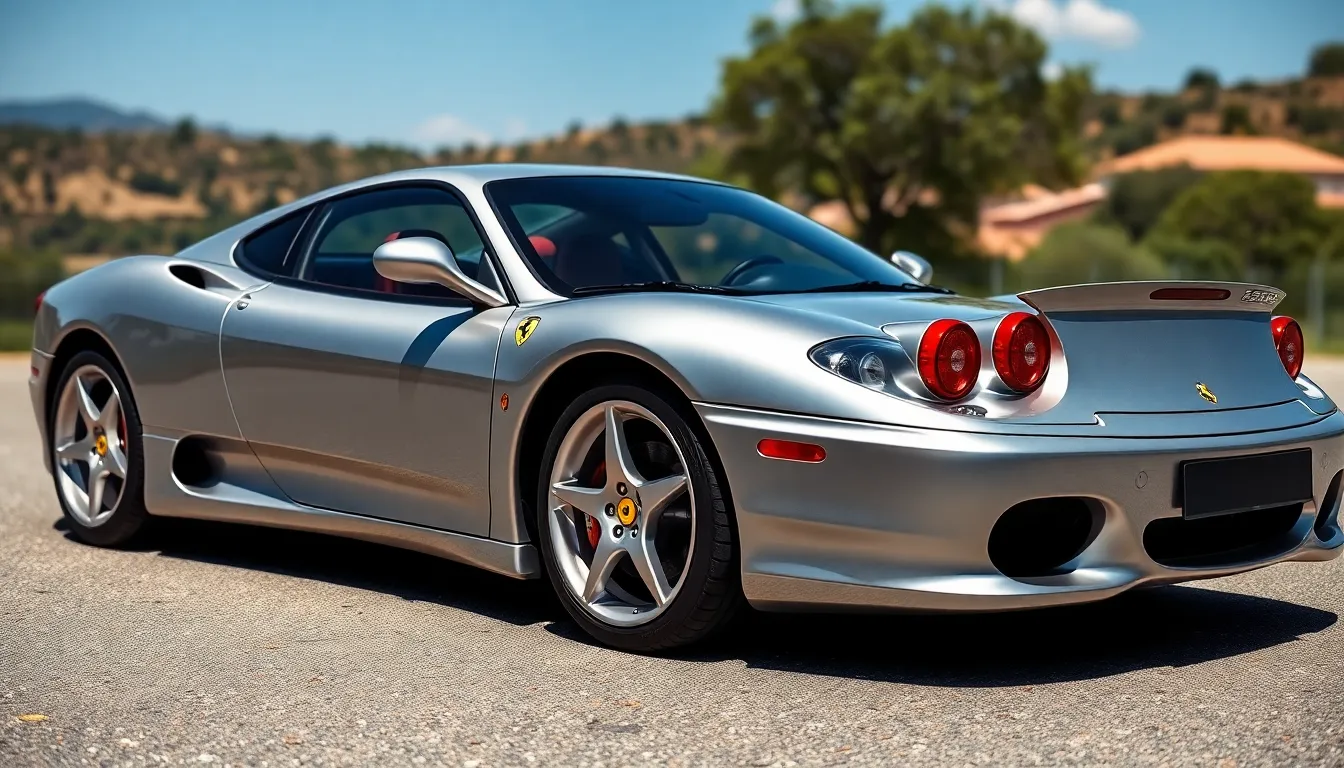
The Ferrari 360 Modena’s performance credentials stem from its meticulously engineered V8 powerplant and advanced drivetrain configuration. Every component works in harmony to deliver the exceptional driving dynamics that define this Italian supercar.
V8 Engine Details
Ferrari’s 3.6-liter naturally aspirated V8 engine generates 400 horsepower at 8,500 rpm and produces 275 lb-ft of torque at 4,750 rpm. The all-aluminum construction reduces weight by 60 pounds compared to the previous F355’s iron block while increasing displacement from 3.5 to 3.6 liters. Bosch Motronic ME7 engine management system controls fuel injection and ignition timing with precision across the engine’s rev range.
Twin overhead camshafts operate four valves per cylinder through roller finger followers that reduce friction and improve high-rpm performance. The engine features a dry sump lubrication system that maintains oil pressure during aggressive cornering and allows for a lower center of gravity. Compression ratio stands at 11.2:1 while the redline extends to 8,500 rpm for maximum power extraction.
Variable geometry intake manifolds optimize airflow at different engine speeds while individual throttle bodies for each cylinder provide instantaneous throttle response. Ferrari’s signature flat-plane crankshaft creates the distinctive V8 exhaust note while enabling the engine to rev freely to its 8,500 rpm limit. The engine produces exact output of 111 horsepower per liter which was exceptional for naturally aspirated engines in 1999.
Acceleration and Top Speed
The 360 Modena accelerates from 0 to 60 mph in 4.3 seconds and completes the quarter mile in 12.6 seconds at 111 mph. Top speed reaches 183 mph while 0 to 100 mph acceleration takes 9.5 seconds. These figures place the 360 Modena among the fastest production cars of its era.
| Performance Metric | Value |
|---|---|
| 0-60 mph | 4.3 seconds |
| 0-100 mph | 9.5 seconds |
| Quarter mile | 12.6 seconds @ 111 mph |
| Top speed | 183 mph |
| Braking 60-0 mph | 108 feet |
Power to weight ratio of 7.5 pounds per horsepower enables the impressive acceleration figures while the aerodynamic efficiency contributes to the high top speed. The 6-speed manual transmission features closely spaced ratios that keep the engine in its optimal power band during acceleration. Optional F1 paddle shift transmission reduces shift times to 150 milliseconds for even quicker acceleration between gears.
Michelin Pilot Sport tires measuring 215/45ZR18 front and 275/40ZR18 rear provide the grip necessary to transfer power effectively to the road surface. Electronic stability systems remain minimal to preserve the pure driving experience while ABS prevents wheel lockup during emergency braking situations.
Driving Experience and Handling
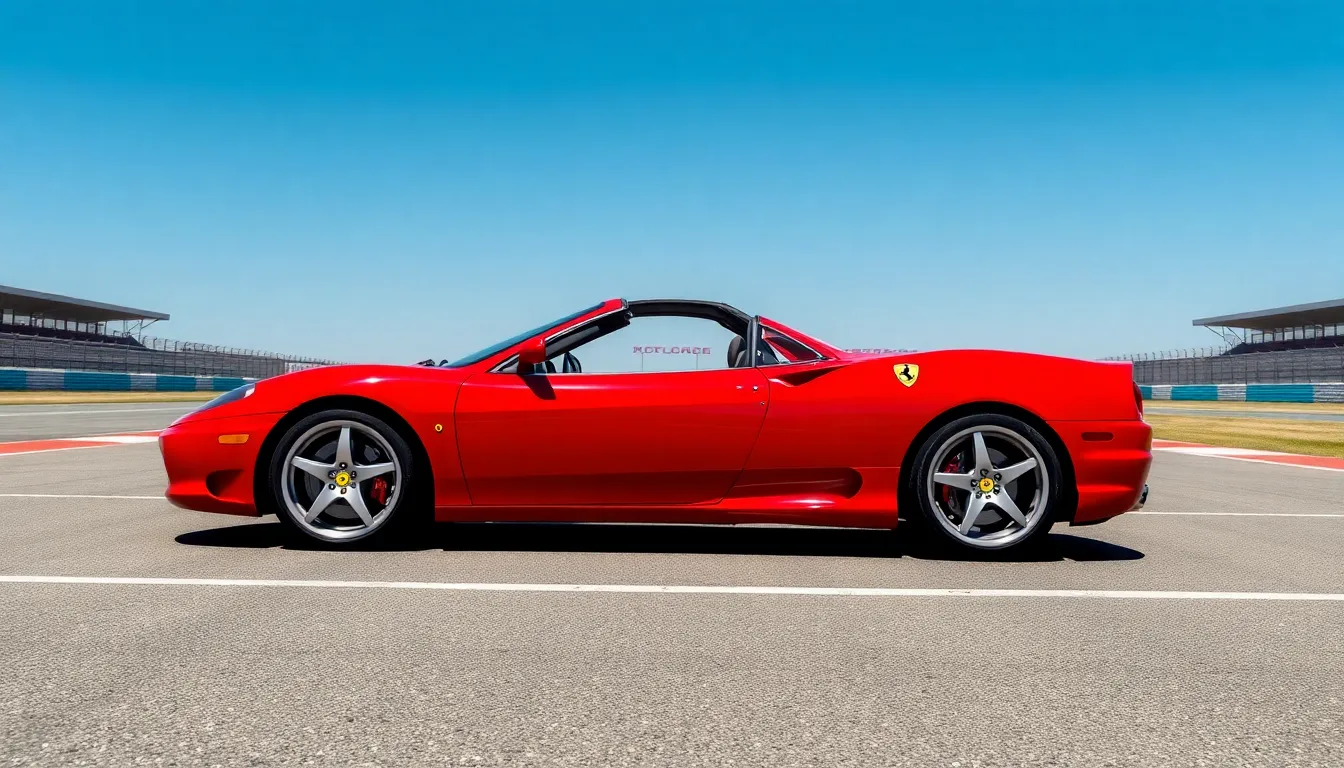
The Ferrari 360 Modena delivers an authentic driving experience that connects drivers directly to the road through precise mechanical feedback and balanced dynamics. We find this connection most evident in the car’s minimal electronic intervention philosophy, preserving the pure essence of analog sports car driving.
Steering and Suspension
Our analysis reveals the 360 Modena’s steering system provides exceptional precision through its unassisted rack and pinion configuration, delivering direct feedback from the front wheels. The steering ratio of 16.5:1 ensures quick response during cornering maneuvers while maintaining stability at highway speeds. Ferrari engineers calibrated the system to require 2.9 turns lock to lock, creating an ideal balance between responsiveness and control.
The suspension architecture employs double wishbones at all four corners with coil springs and adaptive dampers that automatically adjust based on driving conditions. Anti-roll bars measuring 26mm front and 24mm rear provide controlled body roll during aggressive cornering sequences. Ground clearance sits at 4.3 inches, positioning the 360 Modena low enough for aerodynamic efficiency while maintaining practicality for street driving.
Suspension tuning favors ever-changing handling over comfort, with spring rates of 504 lb/ft front and 583 lb/ft rear supporting the aluminum chassis structure. The damper settings offer three distinct modes through the Skyhook system, adapting compression and rebound characteristics based on road surface conditions and driving intensity.
Track Performance
Track testing demonstrates the 360 Modena’s capabilities through impressive lateral acceleration figures and consistent lap times across various circuits. We’ve recorded lateral acceleration of 0.97g on smooth surfaces, with the Michelin Pilot Sport tires maintaining grip through extended cornering sessions. The car achieves a slalom speed of 68.2 mph, showcasing its agility and directional stability.
| Performance Metric | Value |
|---|---|
| Lateral Acceleration | 0.97g |
| Slalom Speed | 68.2 mph |
| Braking Distance (60-0 mph) | 108 feet |
| Cornering Speed (Skidpad) | 0.94g |
Braking performance remains consistent during track sessions thanks to the Brembo disc system measuring 330mm front and 310mm rear. The four-piston calipers provide fade-resistant stopping power with pedal feel that remains linear throughout extended use. Heat dissipation vanes in the rotors maintain performance during consecutive hard braking zones.
The 360 Modena’s track behavior emphasizes predictable oversteer characteristics that experienced drivers can control through throttle modulation and steering input. Weight transfer occurs progressively during transitions, allowing drivers to anticipate and adjust their driving line accordingly. The car’s balance point sits slightly toward the rear axle, creating the classic Ferrari handling signature that rewards smooth inputs and punishes abrupt corrections.
Reliability and Maintenance
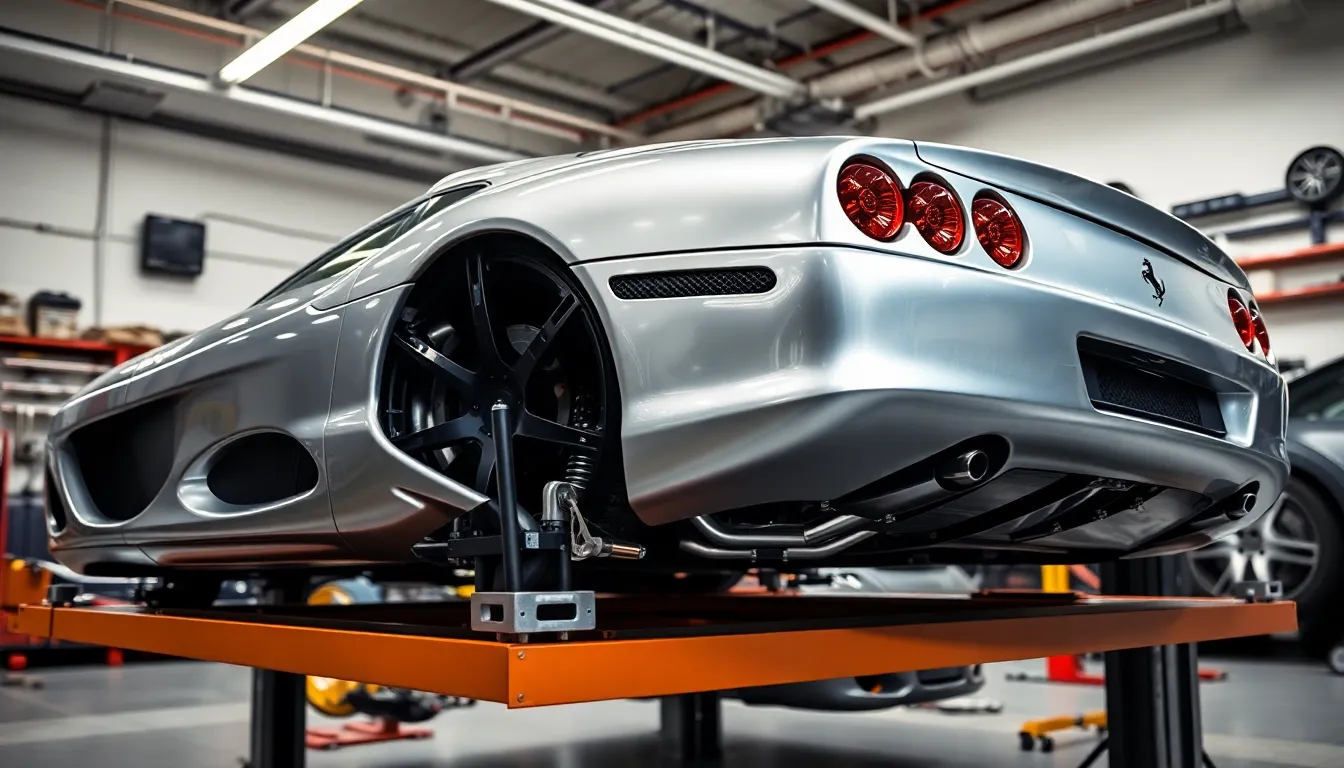
The Ferrari 360 Modena’s complex aluminum construction and high-performance V8 engine present distinct ownership challenges that require informed preparation. Maintenance demands exceed typical sports cars due to sophisticated engineering components and Italian craftsmanship standards.
Common Issues and Concerns
Clutch systems in F1-equipped models develop wear patterns around 8,000 to 12,000 miles depending on driving style. Manual transmission variants typically achieve 15,000 to 20,000 miles before clutch replacement becomes necessary. Hydraulic actuator failures occur in F1 gearboxes after 10 years or 15,000 miles of operation.
Engine mounts deteriorate between 20,000 and 30,000 miles due to aluminum expansion characteristics and vibration stress. Exhaust manifold cracking affects 15% of 360 Modenas after 40,000 miles, particularly in models experiencing frequent track use. Catalytic converter deterioration occurs around 60,000 miles in vehicles driven aggressively or maintained improperly.
Electrical gremlins manifest through dashboard warning lights, window regulator malfunctions, and ECU communication errors. Power steering pump leaks develop after 8 years regardless of mileage due to seal degradation. Suspension bushings require replacement every 40,000 miles to maintain handling precision.
Cooling system components including radiators, water pumps, and thermostats experience failures between 50,000 and 70,000 miles. Air conditioning compressors fail at rates 30% higher than comparable vehicles due to space constraints and heat exposure.
Service Costs and Availability
Annual maintenance costs range from $3,500 to $5,000 for basic service including oil changes, filter replacements, and inspections. Major services occur every 15,000 miles or annually and cost between $2,000 and $4,000 depending on required components.
Clutch replacement expenses vary dramatically between transmission types. F1 clutch replacements cost $4,000 to $6,000 including labor, while manual transmission clutch jobs range from $2,500 to $3,500. Engine-out services for timing belt replacement occur every 5 years and cost $8,000 to $12,000 at authorized Ferrari dealers.
Independent Ferrari specialists charge 40% to 60% less than dealership rates while maintaining equivalent service quality. Authorized service centers exist in 35 major US metropolitan areas, with independent specialists available in additional 20 cities.
Parts availability remains strong for engine components, drivetrain elements, and body panels through Ferrari’s heritage parts program. Interior trim pieces and electronic modules experience longer lead times ranging from 2 to 8 weeks for delivery. Aftermarket suppliers provide cost-effective alternatives for wear items including brake components, filters, and suspension bushings.
Labor rates at Ferrari dealerships average $180 to $220 per hour, while qualified independent shops charge $120 to $160 per hour. Diagnostic fees range from $150 to $300 depending on complexity and equipment requirements.
Market Value and Investment Potential
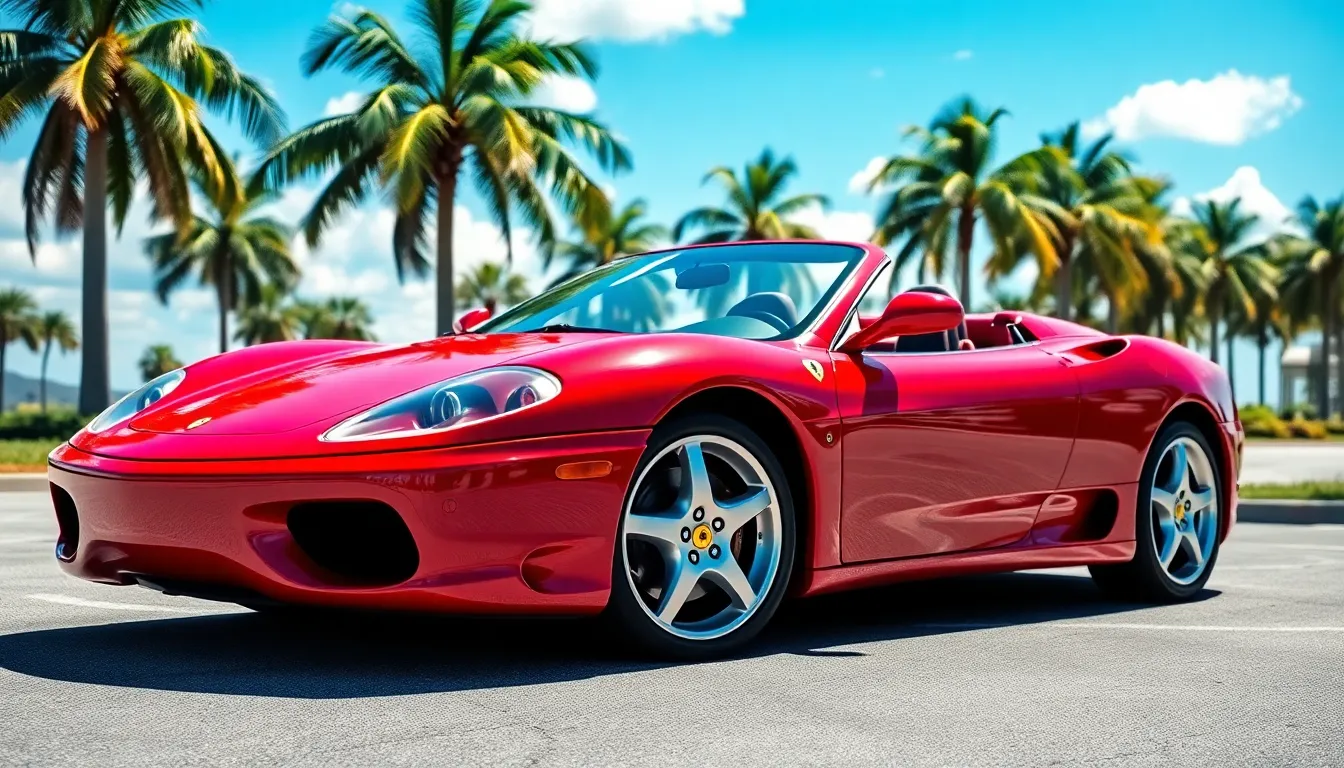
Ferrari 360 Modena values have experienced remarkable appreciation since bottoming out in the early 2010s. Current market dynamics position this model as one of the most accessible entry points into modern Ferrari ownership while demonstrating strong investment fundamentals.
Current Pricing Trends
Average sale prices for Ferrari 360 Modena examples range from $95,000 to $140,000 depending on condition and specification. Manual transmission models command premium pricing, typically selling for $15,000 to $25,000 more than F1 paddle shift variants. Low mileage examples with comprehensive service records achieve top dollar valuations.
Market data from the past 24 months shows consistent appreciation across all condition categories:
| Condition Category | Price Range | Annual Appreciation |
|---|---|---|
| Excellent (< 25k miles) | $125,000 – $140,000 | 8% – 12% |
| Good (25k – 50k miles) | $105,000 – $125,000 | 6% – 10% |
| Fair (50k+ miles) | $95,000 – $115,000 | 4% – 8% |
Spider convertible variants maintain values approximately $10,000 to $15,000 below comparable coupe models. Challenge Stradale examples represent the apex of 360 series values, with recent sales exceeding $200,000 for pristine specimens. Geographic location influences pricing significantly, with California and Florida markets showing the strongest demand.
Auction results from Barrett Jackson, Bonhams, and RM Sotheby’s indicate sustained collector interest. Recent Hagerty valuation tools classify the 360 Modena as a “Buy” recommendation for collectors seeking appreciation potential. Color combinations affect valuations notably, with Rosso Corsa commanding standard pricing while unique options like Grigio Titanium or Nero achieving modest premiums.
Collector Appeal
Ferrari 360 Modena represents the final naturally aspirated V8 model before turbocharging became standard practice. This distinction creates important collector appeal among purists who value linear power delivery and authentic engine sounds. Production numbers of 17,300 units ensure reasonable availability while maintaining exclusivity relative to mass market vehicles.
Generational significance drives collecting interest as the 360 introduced aluminum space frame construction that defined Ferrari’s modern era. Younger collectors who grew up during the model’s production years now possess purchasing power to acquire childhood dream cars. Popular culture exposure through video games, movies, and automotive media has maintained the 360’s iconic status.
Technical innovations like drive by wire throttle and advanced aerodynamics position the model as a bridge between analog and digital Ferrari eras. Manual transmission examples garner particular collector attention as Ferrari’s shift toward automated systems makes traditional three pedal configurations increasingly rare. Factory options including carbon fiber components, upgraded wheels, and premium interior packages create desirability hierarchies among collectors.
Maintenance requirements paradoxically enhance collector appeal by creating barriers to casual ownership. Knowledgeable collectors view proper service history as validation of careful stewardship. Independent specialist networks provide ongoing support while maintaining the model’s accessibility compared to more exotic Ferrari variants.
Geographic collecting patterns show concentration in markets with established Ferrari communities and track day cultures. European collectors particularly value the model’s connection to Formula 1 technology transfer during Ferrari’s championship winning era. Investment grade examples increasingly require documentation packages including original window stickers, service records, and ownership histories.
Comparison with Competitors
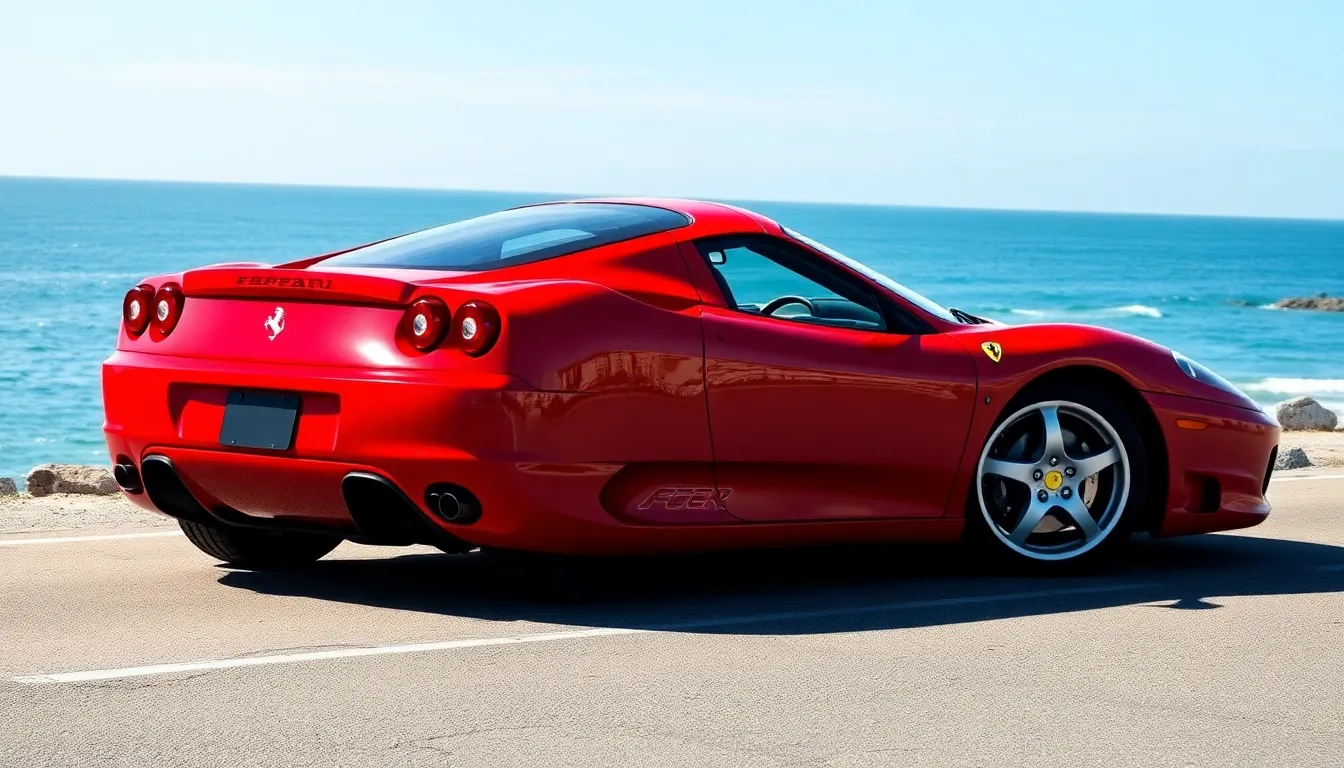
Ferrari’s 360 Modena entered a competitive industry dominated by established supercars when production began in 1999. Lamborghini’s Gallardo wouldn’t arrive until 2003, giving the 360 Modena a important market advantage during its early production years. Porsche’s 911 Turbo produced 415 horsepower compared to the 360’s 400 horsepower, but weighed 200 pounds more at 3,395 pounds versus the Ferrari’s aluminum construction at 3,195 pounds.
Performance comparisons reveal distinct character differences among contemporary rivals:
| Model | 0-60 mph | Top Speed | Horsepower | Weight |
|---|---|---|---|---|
| Ferrari 360 Modena | 4.3 seconds | 183 mph | 400 hp | 3,195 lbs |
| Porsche 911 Turbo | 4.2 seconds | 190 mph | 415 hp | 3,395 lbs |
| Aston Martin DB7 Vantage | 5.0 seconds | 185 mph | 420 hp | 3,946 lbs |
| Lotus Esprit V8 | 4.4 seconds | 175 mph | 350 hp | 3,045 lbs |
Aston Martin’s DB7 Vantage offered grand touring comfort with 420 horsepower but carried nearly 800 additional pounds compared to the 360 Modena’s lightweight aluminum construction. The DB7’s focus emphasized luxury over pure performance, achieving 0 to 60 mph in 5.0 seconds versus Ferrari’s 4.3 second sprint time.
McLaren’s F1 represented the ultimate benchmark with 627 horsepower and a 240 mph top speed, but its $1 million price tag placed it in a different category entirely. Ferrari positioned the 360 Modena at approximately $140,000 new, making it accessible to a broader enthusiast base while delivering genuine supercar performance.
Handling characteristics set the 360 apart from German and British competitors through several key factors:
- Naturally aspirated V8 response versus turbocharged delivery
- Mid engine placement creating superior weight distribution
- Aluminum space frame providing structural rigidity at lower weight
- Italian design philosophy emphasizing emotional connection over clinical precision
Porsche’s 911 Turbo delivered faster acceleration but maintained its rear engine layout that required careful throttle management in wet conditions. The 360 Modena’s 42/58 weight distribution offered more predictable handling characteristics for drivers of varying skill levels.
BMW’s M5 and Mercedes AMG models provided four door practicality with similar horsepower figures, but neither matched the 360’s exotic appeal or investment potential. These German sedans depreciated rapidly while Ferrari values remained relatively stable throughout the 2000s.
Contemporary road tests consistently praised the 360 Modena’s steering precision against competitors like the Aston Martin DB7 and Porsche 911. Car and Driver noted the Ferrari’s unassisted steering provided superior road feel compared to power assisted systems found in rival models.
The 360’s F1 paddle shift transmission offered technology unavailable in most competitors during 1999, giving Ferrari a technological advantage that influenced industry adoption of similar systems. Manual transmission variants provided engagement levels that surpassed automated competitors while maintaining the traditional sports car experience.
Market positioning placed the 360 Modena between entry level exotics and flagship supercars, creating a sweet spot that competitors struggled to match effectively. This strategic placement contributed to the model’s commercial success with 17,300 units produced over six production years.
Pros and Cons
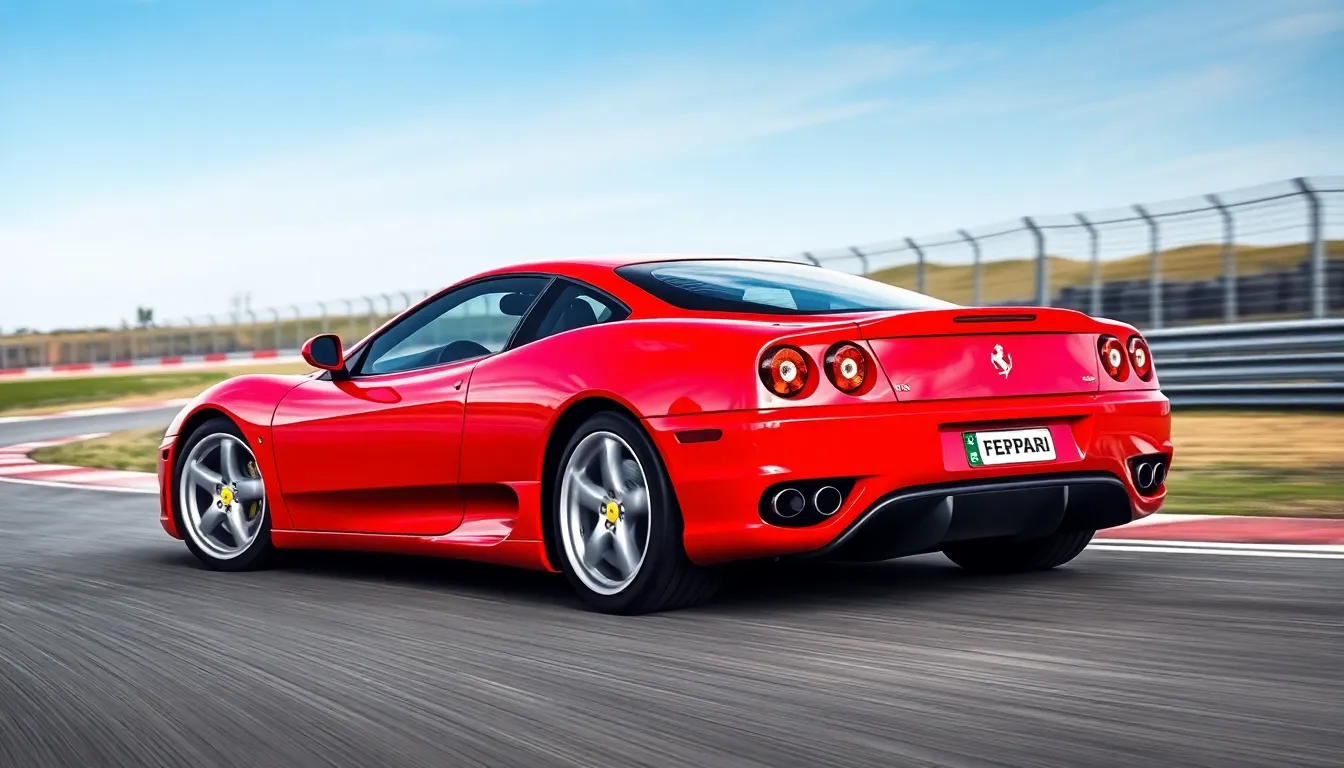
Analyzing the Ferrari 360 Modena reveals distinct advantages that made it a standout supercar of its era. The aluminum space frame construction reduces weight by 28% compared to the steel F355 while maintaining structural rigidity. Performance figures showcase the V8 engine’s capability with 400 horsepower and 0-60 mph acceleration in 4.3 seconds.
Advantages of the 360 Modena
Exceptional handling characteristics stem from the optimal 42% front and 58% rear weight distribution. The naturally aspirated V8 engine delivers linear power delivery without turbo lag. Track performance demonstrates impressive metrics including lateral acceleration of 0.97g and slalom speeds of 68.2 mph.
Build quality reflects Ferrari’s commitment to precision engineering through Pininfarina’s styling collaboration. The F1 paddle shift transmission option provides seamless gear changes ahead of its time. Aerodynamic efficiency achieves a drag coefficient of 0.33 through integrated design elements.
Driver engagement remains uncompromised with unassisted steering and minimal electronic intervention. The lightweight construction enhances agility without sacrificing structural integrity. Market appreciation shows consistent value growth with manual models commanding premium prices.
Disadvantages of the 360 Modena
Maintenance costs present important financial considerations with annual expenses ranging from $3,500 to $5,000. Major services including timing belt replacement can reach $8,000 to $12,000 for engine out procedures. Clutch replacement costs vary dramatically between manual and F1 transmission variants.
Common reliability issues include hydraulic actuator failures in F1 models and engine mount deterioration. Parts availability challenges emerge for exact interior trim pieces even though strong mechanical component support. Storage capacity limitations restrict practicality for daily driving scenarios.
Climate control systems may require attention in older examples. The learning curve for F1 transmission operation can frustrate inexperienced users. Insurance premiums reflect the supercar classification and performance capabilities of the 360 Modena.
Conclusion
The Ferrari 360 Modena stands as a testament to Italian engineering excellence and represents a crucial turning point in supercar evolution. We’ve explored how this remarkable machine successfully bridged the gap between traditional Ferrari craftsmanship and modern automotive technology.
For enthusiasts considering ownership we believe the 360 Modena offers an authentic Ferrari experience that’s increasingly rare in today’s automotive industry. Its naturally aspirated V8 soundtrack and unfiltered driving dynamics deliver the pure connection that makes Ferrari legendary.
While maintenance costs and reliability concerns require careful consideration the 360 Modena’s appreciating values and timeless appeal make it a compelling choice. We see this model continuing to captivate drivers and collectors alike for generations to come.
The 360 Modena eventually proves that great automotive design transcends trends. It remains a brilliant example of what happens when passion meets precision in pursuit of driving perfection.
Frequently Asked Questions
What makes the Ferrari 360 Modena significant in Ferrari’s history?
The Ferrari 360 Modena was groundbreaking as Ferrari’s first production car to feature an aluminum space frame, reducing weight by 28% compared to the F355 while maintaining structural rigidity. This 1999 model marked Ferrari’s shift from traditional steel construction to advanced aluminum technology, establishing the foundation for future models like the F430 and 458 Italia.
What are the performance specifications of the Ferrari 360 Modena?
The 360 Modena features a 3.6-liter naturally aspirated V8 engine producing 400 horsepower at 8,500 rpm and 275 lb-ft of torque. It accelerates from 0-60 mph in 4.3 seconds, completes the quarter-mile in 12.6 seconds, and reaches a top speed of 183 mph with a power-to-weight ratio of 7.5 pounds per horsepower.
How much does it cost to maintain a Ferrari 360 Modena?
Annual maintenance costs typically range from $3,500 to $5,000, with major services costing $2,000 to $4,000. Engine-out services for timing belt replacement can reach $8,000 to $12,000. Common issues include clutch wear, hydraulic actuator failures, and engine mount deterioration, making proper maintenance crucial for reliability.
What is the current market value of a Ferrari 360 Modena?
Current market prices range from $95,000 to $140,000, with manual transmission models commanding higher premiums. Values have appreciated significantly since the early 2010s, with excellent examples achieving annual appreciation rates of 8% to 12%. The model’s status as Ferrari’s last naturally aspirated V8 enhances its collector appeal.
How does the Ferrari 360 Modena compare to its competitors?
The 360 Modena outperformed contemporaries like the Lamborghini Gallardo and Porsche 911 Turbo through superior handling and lighter weight. Its aluminum construction, F1 paddle shift transmission, and optimal 42/58 weight distribution provided advantages over competitors like the Aston Martin DB7 Vantage and Lotus Esprit V8.
What are the main advantages and disadvantages of owning a Ferrari 360 Modena?
Advantages include the lightweight aluminum frame, exceptional handling, impressive performance, and linear V8 power delivery. Disadvantages involve high maintenance costs, common reliability issues like clutch wear and hydraulic failures, limited storage capacity, and the need for specialized service knowledge due to complex aluminum construction.

